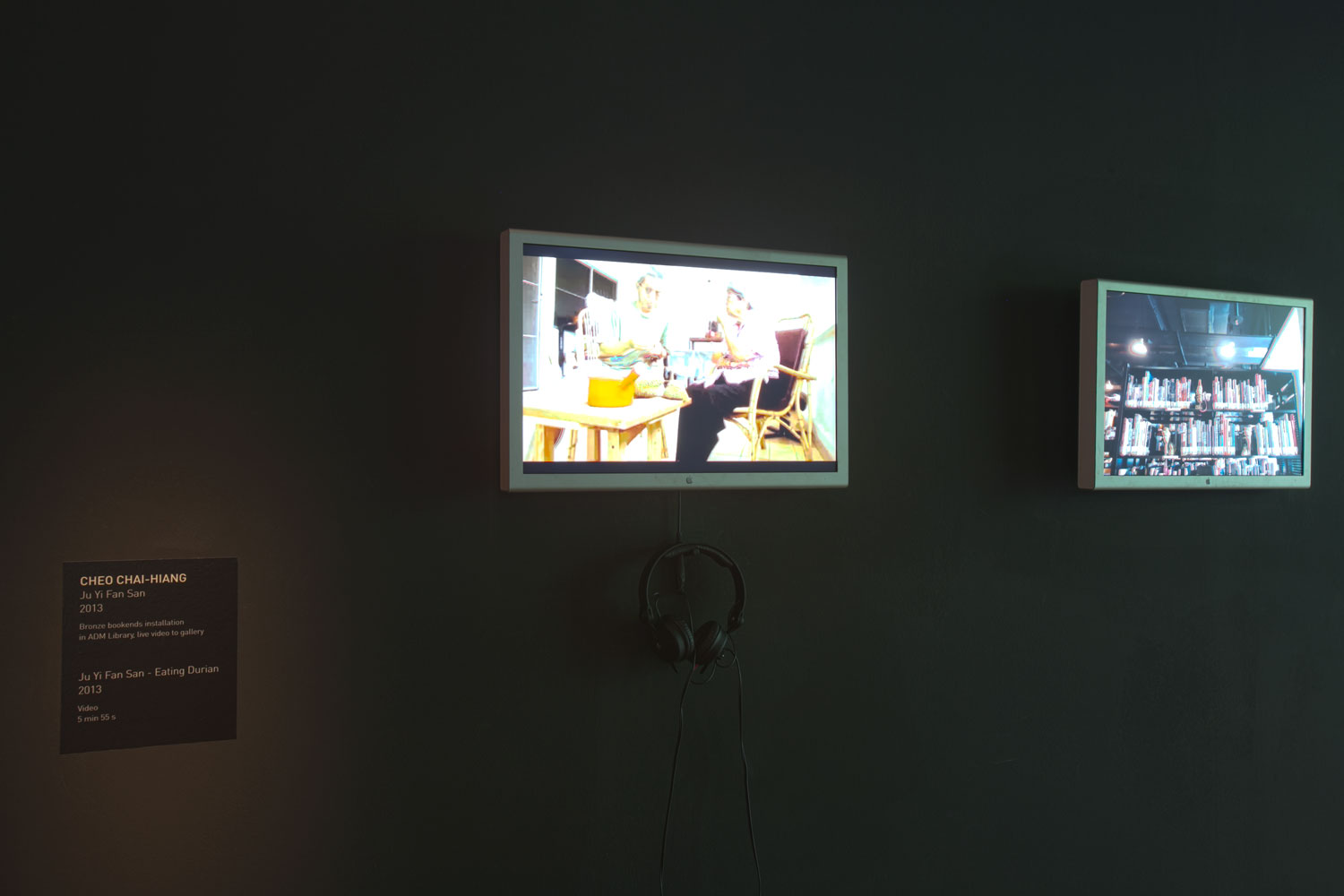Shows
“Immaterial Frontiers”


We may choose either to violate or honor the limits imposed by boundaries, be they physical (borders, barbed wire) or symbolic (rules, habit). “Immaterial Frontiers,” at Nanyang Technological University’s recently renovated Art Design and Media (ADM) Gallery, presented a third, perhaps more intuitive option. This exhibition of film and sound works by six Southeast Asian artists chronicled fleeting transitions—the opaque progression from experience to fictive memory; the segue from loss to recognition—that reject “boundaries” and revel in fraught ambiguity.
Sound installations by Filipino artists Tad Ermitaño and Tengal were mounted in the gallery’s annex, whose glass walls and lofty ceiling are ideal for acoustic works. Ermitaño’s Bell (2010) is a large thin curl of sheet-metal, which hung from the gallery ceiling and dominated the space. Bell radiates a low hum (generated by a small motor), and its pale-white exterior sheath—embodying bland innocence—invites viewers to duck into a shocking red interior, where a visceral reverb produces ambiguous warmth. Nearby was Tengal’s Sounds in a Filing Cabinet (2013), a prim wooden chest whose ten drawers emit random electronic tones when opened. The power to manipulate chaos, which the work offers, is addictive, with the potential to be irritating as a toddler with a drum—and yet the sound-to-silence transitions are compelling.



In the main gallery was an intimate cache of visual works. Indonesian artist Tintin Wulia’s film Fallen (2011) documents performances from her “(Re)Collection of Togetherness” series (2007– ) which confronts issues of national identity. In Fallen, colorful passports perched atop dozens of white columns are toppled like dominos—a repeating metaphor that nearly tumbles into cliché, before blurring into an abstraction as fragile and disquieting as the crushed pages. Vietnamese artist Dinh Q. Lê’s dual-screen From Father to Son: A Rite of Passage (2007), is a disturbing film montage of a fictionalized Vietnam War. The work juxtaposes parallel imagery from Apocalypse Now (1979) and Platoon (1986), two violently similar US war films starring real-life father-son actors. Lê is known for his works that literally interlace photographs like a woven mat: here, he plucks brittle threads of terror and guilt from the Hollywood plots and reweaves their commercialized brutality and patriarchal implications into a shrewd tapestry of modern history.
Ju Yi Fan San – Eating Durian (2013), by contrast, is a modest yet sublime exercise in satire. Created by Singaporean conceptualist Cheo Chai-Hiang, the video follows the artist and his elderly mother as they devour a durian, methodically and with barely withheld restraint. The two converse in Hokkien dialect, once common in Singapore but now marginalized under the country’s pro-Mandarin, “inclusive” policies, which favor the language of economically powerful mainland China. The Confucian maxim Ju Yi Fan San translates as inferring a situation based on a single example. Cheo’s mother speaks only Hokkien, like many of her generation. As they pass on, so too will a vital facet of Singapore’s fundamental culture.

Filmmaker Charles Lim documents a more material loss: his work consistently recounts Singapore’s aggressive land reclamation and ambivalent relationship with the sea. Two short films exhibited here incorporate Lim’s “handing technique,” wherein the camera lens is removed and the artist’s hands are used as a primitive, pink-tinged aperture. This fleshy “lens” generates spasms of grainy movement with a lovely over-exposed glow. One film, Hands (2013), is a brisk stream of quasi-subliminal visuals: shadowy high-rises, figures on the beach, flickering light patterns that resolve into waves. Within these moments, we’re drawn into Lim’s weird jamais vu, urged on by the film’s extraordinary soundtrack that invokes wind-scrapes, liquid echoes and fingertips against skin. This transient, urgent intimacy informed all the works in the exhibition.
“Immaterial Frontiers” was a parallel event of the 2013 Singapore Biennale, which for the first time focused solely on curators and artists from Southeast Asia, a region referred to as a “borderland between East and West.” At the ADM Gallery, more provocative dichotomies proposed by its exhibiting artists instead embraced a fluid liminality—a condition neither outside nor on the edge, but somewhere beyond boundaries.
"Immaterial Frontiers" was on view at ADM Gallery, Nanyang Technological University, Singapore, from October 25, 2013 - December 14, 2013.
Marybeth Stock is a writer, researcher and editor based in Singapore and Japan.







